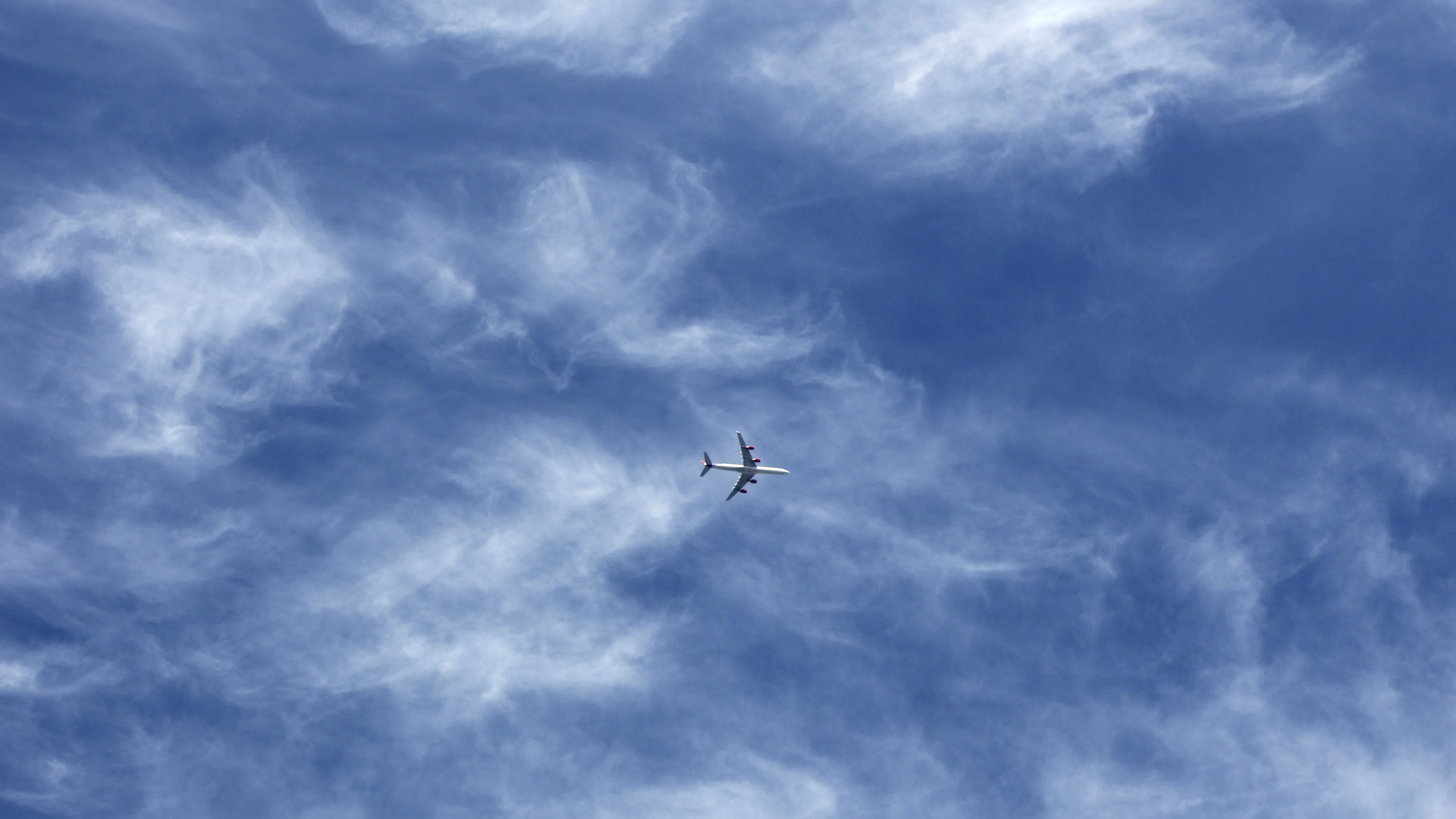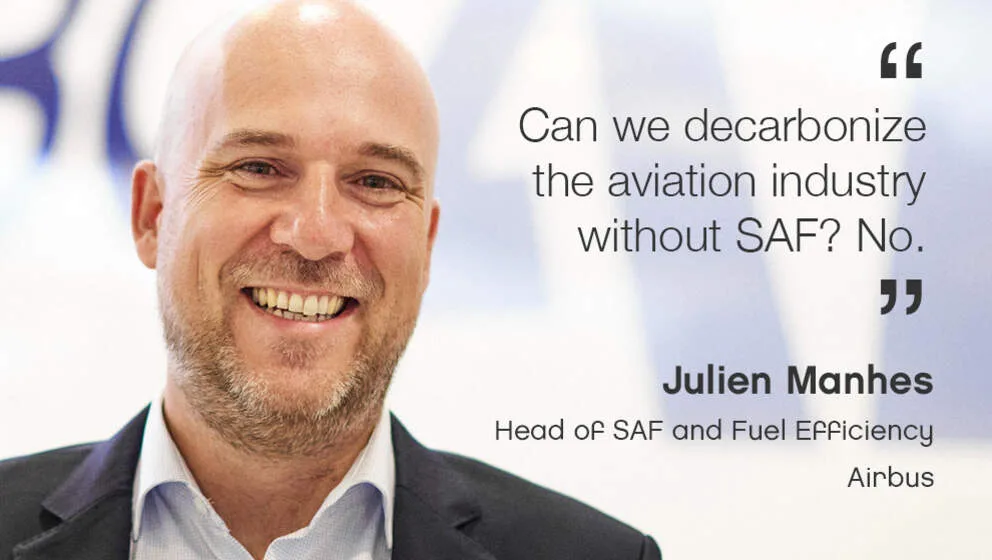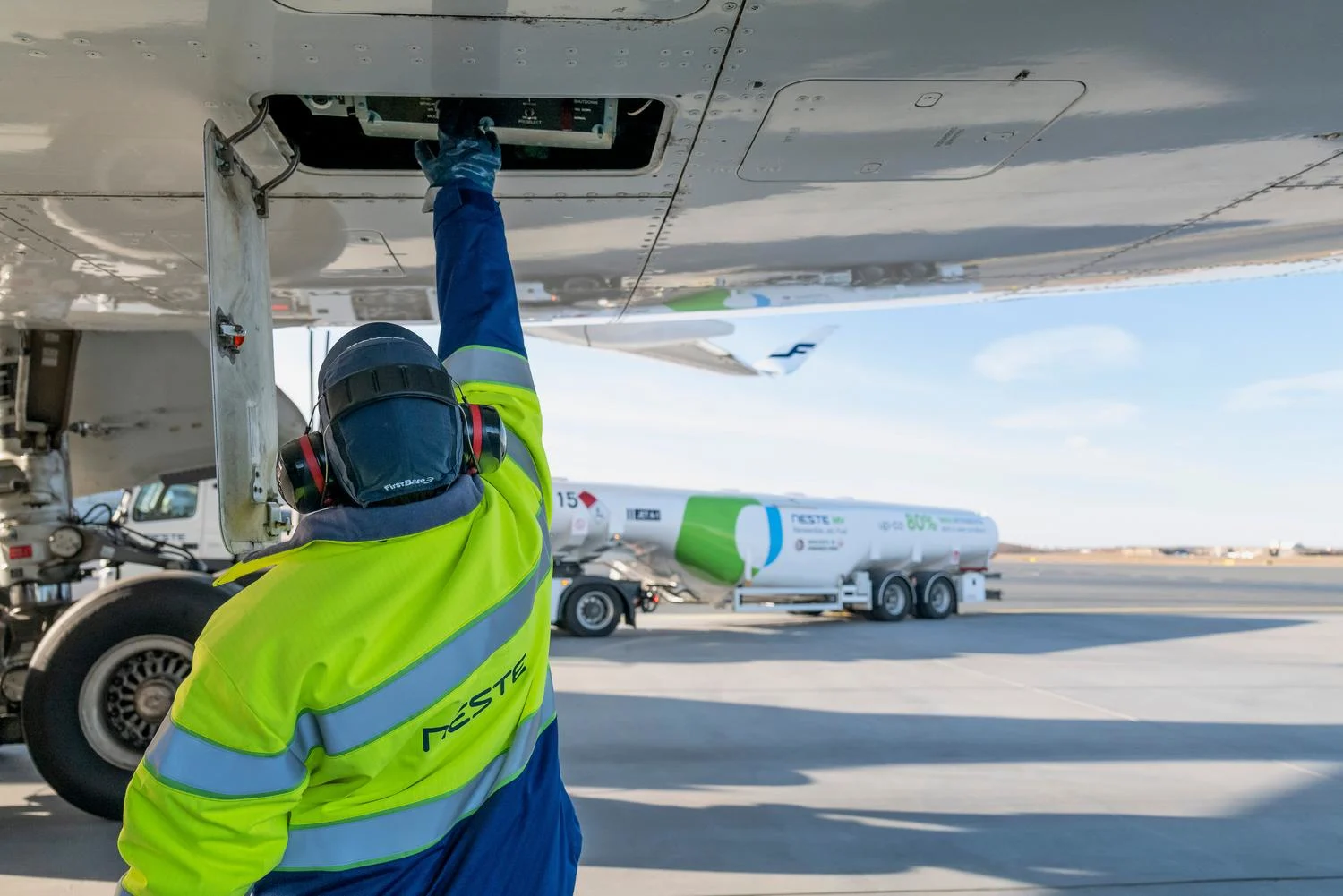
Aviation
5 minute read
Neste x Airbus - A pioneering partnership to decarbonize aviation
Global warming, climate change, and the sustainable actions required to tackle them have topped the headlines for the past years. And it’s no wonder: the effects of climate change are becoming more and more prevalent. To find solutions, policymakers and industry players from around the world need to take action and we see sectors like the aviation industry setting ambitious climate targets.
In this article:
Neste and Airbus are industry leaders showing the first steps on their joint mission to make 100% SAF flights a reality.
SAF is a drop-in fuel, compatible with existing aircraft engines, and airport fuel infrastructure.
There is a strong need for the help of supporting regulations to stimulate production and availability of SAF.
The aviation industry has adopted a long-term global aspirational goal for international aviation of net-zero carbon emissions by 2050 in line with the objectives of the Paris Climate Agreement to limit global warming to well below 2°C. The scenarios outlined as to how the aviation industry could achieve this goal include different measures but all agree on one thing: a key solution is the massive use of sustainable aviation fuel (SAF).
SAF is a fuel made from renewable raw materials and enables a significant reduction of greenhouse gas (GHG) emissions compared to using fossil-based fuel. SAF is also important for Airbus, a leading aircraft manufacturer, which is focused on reducing its emissions and contributing to the ambition to reach net zero carbon emissions by 2050.
“While aviation is very important to unite and connect people, we also need to reduce the impact of flying so that it will be less carbon intensive. Every stakeholder needs to take this seriously. At Airbus, we treat our emissions with utmost importance, and that is why it is at the center of our purpose - to pioneer sustainable aerospace for a safe and united world”, says Julien Manhes, leading Airbus’ Fuel Efficiency and SAF department.
As the life cycle of an aircraft is typically 20–30 years, the aircraft being built today will still be flying when the net zero goals must be met. SAF doesn’t require aircraft engine modifications and it currently can be used when blended up to 50% with conventional jet fuel. As it is available today, it is the leading solution for current fleets.
Vital for the aviation industry, yet misconceptions remain
“SAF is vital for the future of aviation; yet as an industry, we need the help of supporting regulations to stimulate production and availability of SAF. We also need for the different industry and country-level initiatives to fit together well, and for all of the industry players to do their share. We need to work together to educate customers and stakeholders on what SAF is about”, adds Manhes.
SAF is vital for the aviation industry because it is compatible with today’s aircraft and today’s infrastructure.
While sustainable aviation fuel has been around since 2011 preceding approval in the ASTM D7566 standard specification, there are still a lot of myths surrounding it. One of which is that SAF, when burned, doesn’t emit any CO2. The fact is that burning SAF creates emissions but these are not fossil-based and do not add additional carbon to the atmosphere - reducing carbon emissions by 80% on average over the fuel’s life cycle compared to using fossil jet fuel.
Another misconception is that the production of SAF is competing for raw materials with the food industry. The advantage of SAF is that it can be produced from a range of waste and residue raw materials and combined with various production technologies. The feasible raw materials include used cooking oil and fat waste, municipal waste, and agricultural and forestry waste and residues. This feedstock pool will continue to develop in the future in accordance with technological developments and strict sustainability rules.
A third SAF-related misconception is that certified SAF is a different fuel from conventional jet fuel. In reality, SAF is chemically similar and once blended with conventional jet fuel, it is fully certified as a regular jet fuel which can be used without any restrictions - it’s Jet A-1 or Jet A, and as such compatible and ready to be used in existing aircraft engines as well as fuel storage and distribution infrastructure today.

Ideally positioned for creating the future of aviation
As a leading original equipment manufacturer, Airbus is in a unique position to educate and advocate for the increased production and use of sustainable aviation fuel in the aviation industry. Well positioned in aviation’s value chain, Airbus is helping to build the SAF ecosystem, which has led to a strategic partnership with another industry leader, Neste.
"We want to lead the decarbonization of the aerospace sector, so it was natural to cooperate with Neste, the leader in SAF production. This partnership is essential for our sustainability strategy, allowing us to work together on various projects. Together we have moved SAF forward, and while doing so, completed our first 100% SAF test flights”, continues Manhes.
Within their partnership Airbus and Neste have been able to accomplish a lot. In their ECLIF project, Airbus and Neste tested the impact of flying on 100% pure SAF on a real flight in 2021. The project aimed to understand the impact of using SAF beyond CO2 emission benefits, looking at contrails and the non-CO2 effects, compared to using fossil-based fuel. Another test was conducted later that year when an Airbus A380 plane flew from Nice to Toulouse with 100% SAF on one of the four engines. To demonstrate the versatility of SAF, the partners also collaborated on Australia’s first helicopter flight using SAF, with a demonstration flight on an Airbus H130 helicopter using blended SAF during the Avalon Airshow in Australia in early 2023.
“Our goal is to make our commercial and military aircraft and helicopters capable of flying with 100% SAF by 2030. These flights are milestone projects for us and we look forward to keeping pioneering together”, Manhes adds.
“Can we decarbonize the aviation industry without SAF? The simple answer is no! We want to help connect the dots between industry players and reach our 100% SAF goal, and our partnership with Neste is a big help in that. We also want to continue being an active catalyst for change. SAF is one, if not the biggest pillar for decarbonizing the industry. Reaching net zero by 2050 requires continuing the technical development of SAF and for the aviation industry to embark on the SAF journey”, concludes Manhes.

